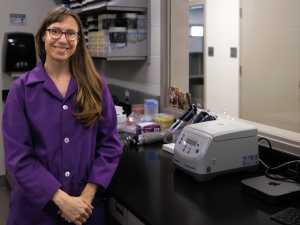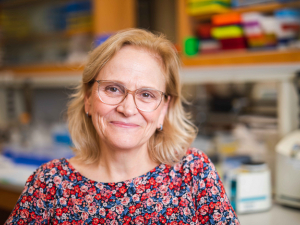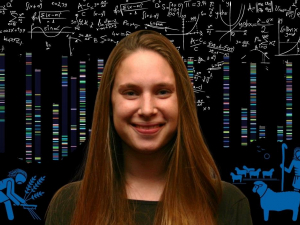
“We Still Don’t Understand Who We Are”
Duke’s newest evolutionary anthropologist, Charles Musiba, grew up in Tanzania, and it is to that verdant East African country he still returns to try to understand who humans are and how we got here.
But the newly arrived full professor isn’t solely focused on our past — he also wants to understand how humans adapt to dramatic changes in climate, to help us prepare for our future.
“I grew up on the shores of Lake Victoria,” he said. “As a kid, I climbed Mount Kilimanjaro, which was actually covered with beautiful icecaps. Now they’re gone — they’re just a tiny little blurb — just in my lifetime.”
Musiba joined Duke’s department of Evolutionary Anthropology on July 1 from the University of Colorado Denver, to become a teammate with colleagues he has long admired.
In August, even before unpacking his boxes in the Biological Sciences building, Musiba was back in Tanzania to continue asking how much diversity there was among the various species of Australopithecus that lived some 3.5 million years ago — our ancestors, represented by the famous specimen Lucy.
“In Ethiopia, in Kenya and in Tanzania, there seems to be some really big variability,” Musiba said, sitting near a tall stack of carefully labeled boxes full of bones and casts. “We don’t agree on whether they are actually one single species evolving, and highly variable; or one single species evolving, but highly sexually dimorphic [i.e., showing dramatic differences in males and females]; or whether there was actually more than one species in that area.”
Evolutionary anthropology typically struggles with scant fossil evidence, though Musiba’s team recently turned up an intriguing new mandible with a good set of teeth. This summer, he was looking not at bones, but at the tracks of bipedal footprints near where Lucy's kind had been found. One set of fossilized footprints that had been previously ascribed to bears looked to him like another upright human-like creature — but quite different from Lucy. So they revisited the site this summer and took sophisticated 3D photos to understand them better.
For the bones we do have, Duke has a very good micro-CT scanner, a technology Musiba will be using to understand the new mandible better. He will also be working with a team in Denmark that has the ability to examine 3-million-year-old proteins non-destructively recovered from the outer enamel of the jawbone’s teeth. This field, called paleo-proteomics, can even tell the sex of an individual.
“What drew me here is having a team of people I like to collaborate with, such as Steven Churchill, Herman Pontzer. We ask questions that are similar to some extent,” Musiba said. “Being here brings me to a group of people who are very cool in terms of their work ethic and their profession.”
He has worked with Churchill for a decade on a site in South Africa called the Rising Star Cave, where more than 1,500 fossils have been recovered representing at least 15 individuals of a new species called Homo naledi. These early people have been dated to about 300,000 years ago, which would make them contemporaries of Homo sapiens, our group. But they are relatively small-brained and built for tree climbing, despite getting around on two legs.
South African paleontologist Lee Berger proposes that the naledi bodies were ritually deposited in the remote cave, but Musiba gently and privately disagrees. To him, the evidence looks more like a sudden entrapment by rising cave waters, like the soccer team trapped in Thailand in 2018, rather than bodies being dropped into a hole.
Musiba also plans to start a new project with Duke ape and dog researcher Brian Hare to explore a little-known colony of retired laboratory chimpanzees living on an island in Lake Victoria.
Several generations of chimpanzees have been born on the island in relative isolation and the population now likely numbers more than 100. But nobody really knows yet, because the chimpanzees are not acclimated to humans. The apes came from French and British labs, likely making them a new genetic mix of eastern and western African chimpanzees. Musiba visited the island in 2019, but could only get close enough to hear them, not see them.
“We’re going to be looking at how those chimpanzees have not only survived but actually thrived in that particular environment. How do they utilize the landscape?” Musiba wonders.
In the last few years, park wardens have patiently acclimated the animals to human presence so that now they can be studied a bit better, but technology has also improved in the last half century since Jane Goodall’s painstaking observational field work. Motion-sensitive cameras and lab techniques to analyze droppings will reveal a lot about the animals without disturbing them, Musiba said. The research team is thinking about making research labs in container cubes that can be removed from the island when their work is done.
Musiba said we study anthropology — humans, ancient humans, our ape cousins — to understand ourselves.
“We always have been different, as humans. We have always been part of this group of organisms which are always sort of interested in searching,” he said. “We care about this because we still don't understand who we are.”




